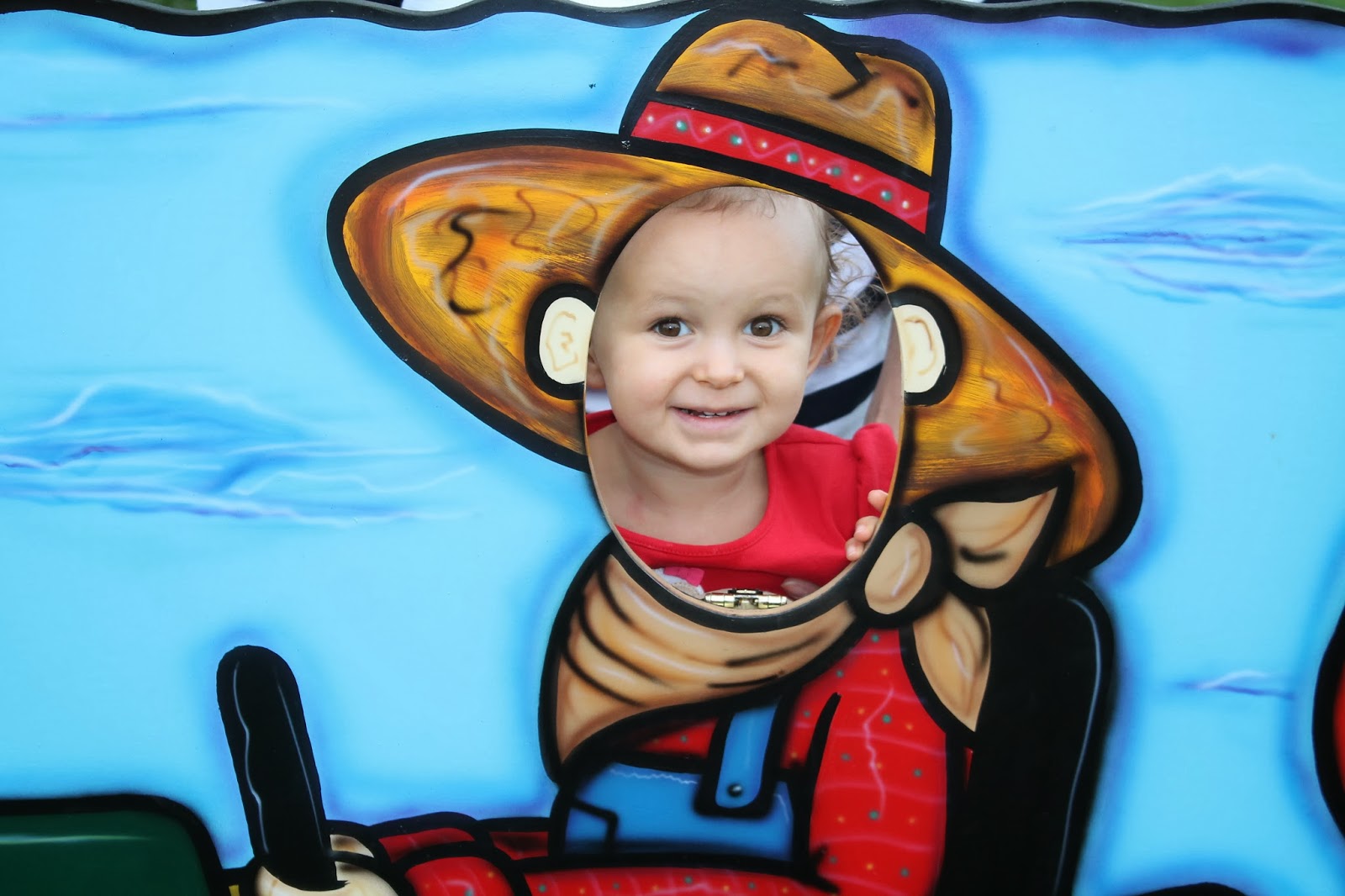Getting ready for Christmas. 24 months old.
This week we continued with our theme of baby animals. After all the discussions and reading books, she happily met the awesome rain dear with their bright red noses and jingle bells. We talked about letter F for fawn and foal. There are so many related new words: dear, stag, doe, fawn, antlers...
The concept of change of the season and winter came naturally. We got up in the morning to see all the white scenery through the windows. It is always so sweet to see them getting excited about learning something new.
She wanted to use her markers on the picture of the fawn. She's recently learned the correct way of holding her markers and crayons, which immediately helped her with her strokes on the paper. Here she made her first circles and loved them.
Bambi - a story time for toddler.
 We read "Bambi" by Felix Salten, illustrated by Maja Dusikova, retold by K. Alves, translated by K. Koth. This beautiful book is easy to understand for toddlers. "Squeezing a 300-page novel classic into a mere 32 pages may sound impossible, but this new Swiss translation not only pulls it off, it never sacrifices heart for succinct storytelling... Dusikova taps into the emotional core of this tale, making it accessible to all but the youngest readers." - Kirkus Reviews.
We read "Bambi" by Felix Salten, illustrated by Maja Dusikova, retold by K. Alves, translated by K. Koth. This beautiful book is easy to understand for toddlers. "Squeezing a 300-page novel classic into a mere 32 pages may sound impossible, but this new Swiss translation not only pulls it off, it never sacrifices heart for succinct storytelling... Dusikova taps into the emotional core of this tale, making it accessible to all but the youngest readers." - Kirkus Reviews.We really enjoyed the beautiful illustrations of the seasons: all yellow pages for fall, all white for winter. The story continues through all the 4 seasons from Bambi's birth in spring till the next spring when he gets his antlers.
The game with letters F: I used "quick letter pads" to cover all the pictures of fawns with letters F. I asked Camilla to find all the fawns. Sometimes it was easy with the black letters, and sometimes not so easy (like this white on white on this picture). She liked the little game and wanted to do it again.
F is for Fawn
 At 24 months old, we concentrated on learning to use the glue. Camilla worked with glue and glue sticks before, but was always so destructed by the projects that she never really knew that she needed glue to fix something to something, and that object would stay there... funny - a philosophical concept.
At 24 months old, we concentrated on learning to use the glue. Camilla worked with glue and glue sticks before, but was always so destructed by the projects that she never really knew that she needed glue to fix something to something, and that object would stay there... funny - a philosophical concept. We went slow this time. I put a cotton ball on paper, blew, and it would fly away. Then I put a drop of glue and a cotton ball, and it would stay when we blew. Why didn't I do it before? Well, we also practiced the sound "f" with this exercise.
All we did for this project is gluing cotton balls and cut outs onto the base. For the base I used a 12 by 12 printed paper from our new "The Photo Real Stack" bought in Michaels. We've got a 3-D winter image worth framing - nice!
F is for Feather.
We continue playing with the letters. I put pieces of play-doh onto the letter and offered her to stick the feathers into the play-doh. This is very difficult! First you need to find the end with the stem. Then you need to hold the feather close to its end. Camilla managed to stick only a few of the feathers and didn't tolerate the whole process that easily.There is always a surprise when you are playing with the little one. She couldn't handle the feathers, but she's leaned how to trace a letter with play-doh: made her Mommy happy.
F is for Flowers
We discussed that there are no flowers to be found outside any more. Flowers are there in spring and summer. Now it's cold and snow. Used flower stickers on F which were left over from our summer-fall sticker scene. Stickers are always very good for the fine motor skills!Our very first snowman - so tired and need a snack right now!




























